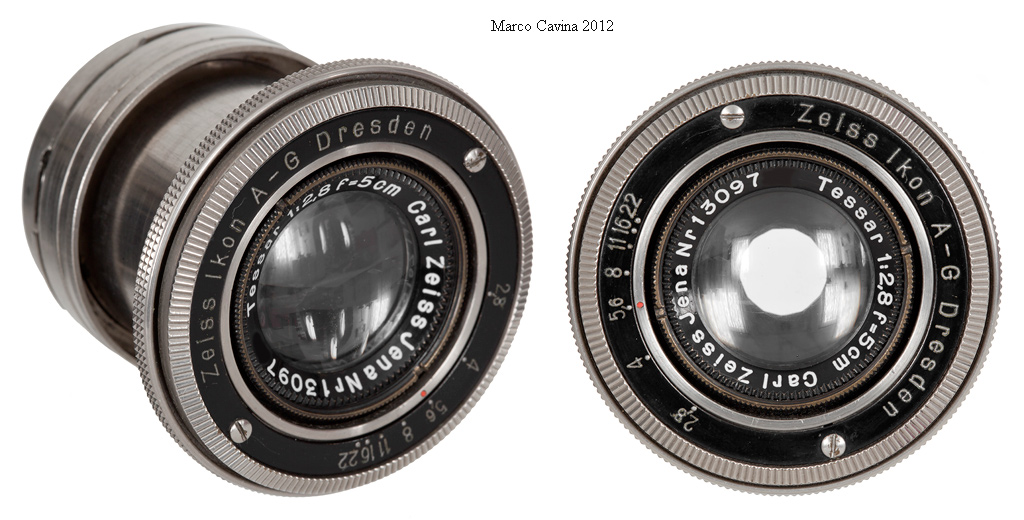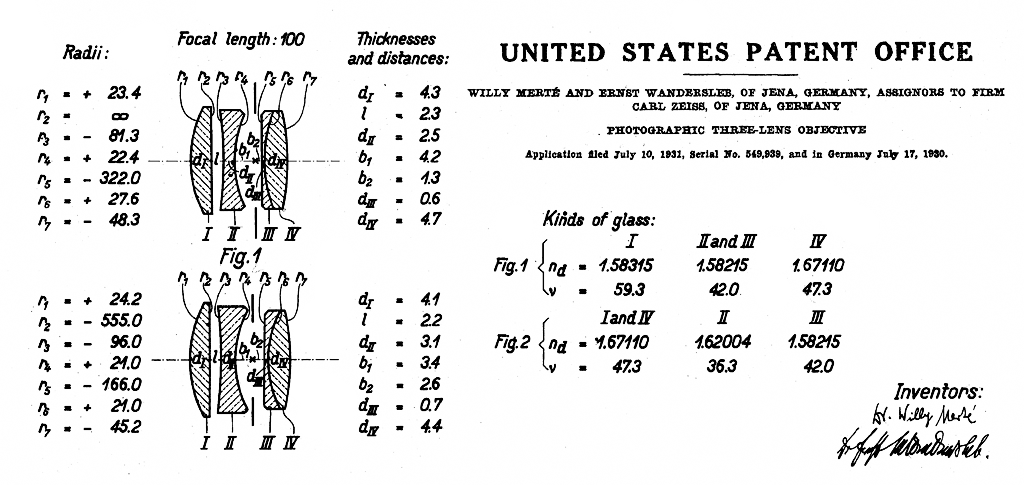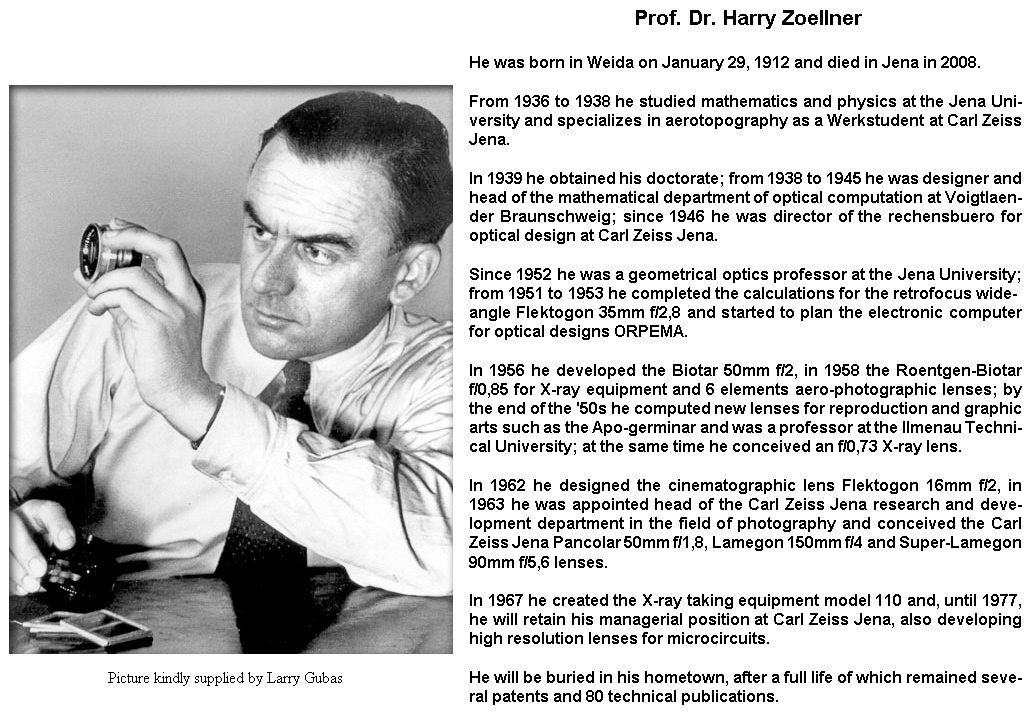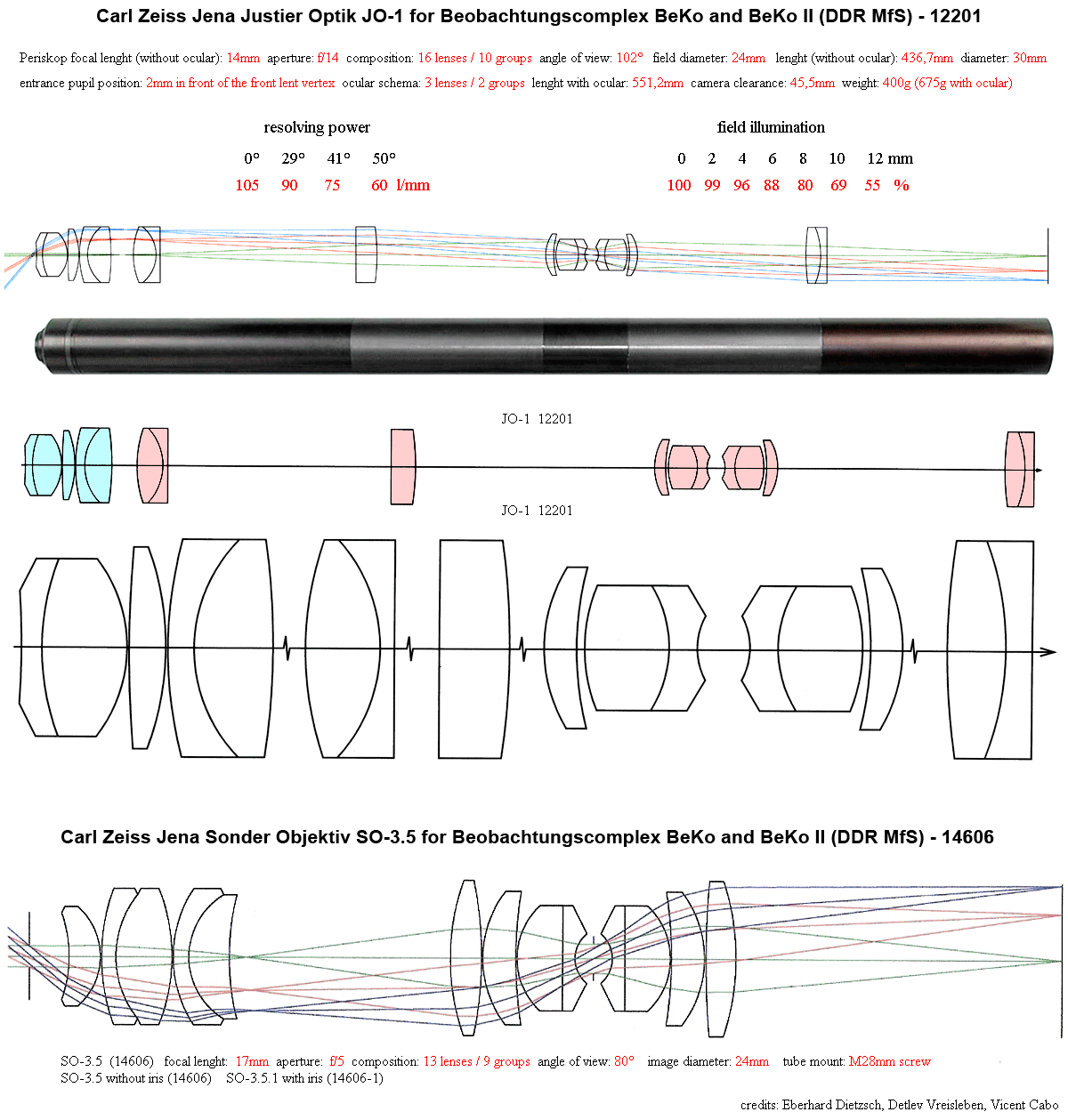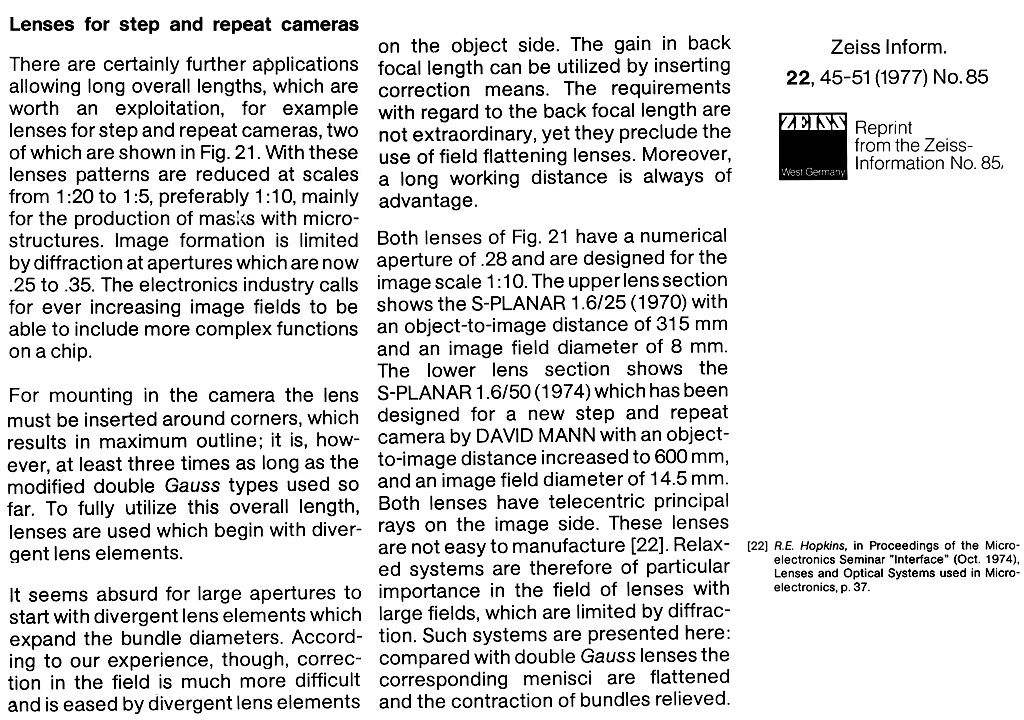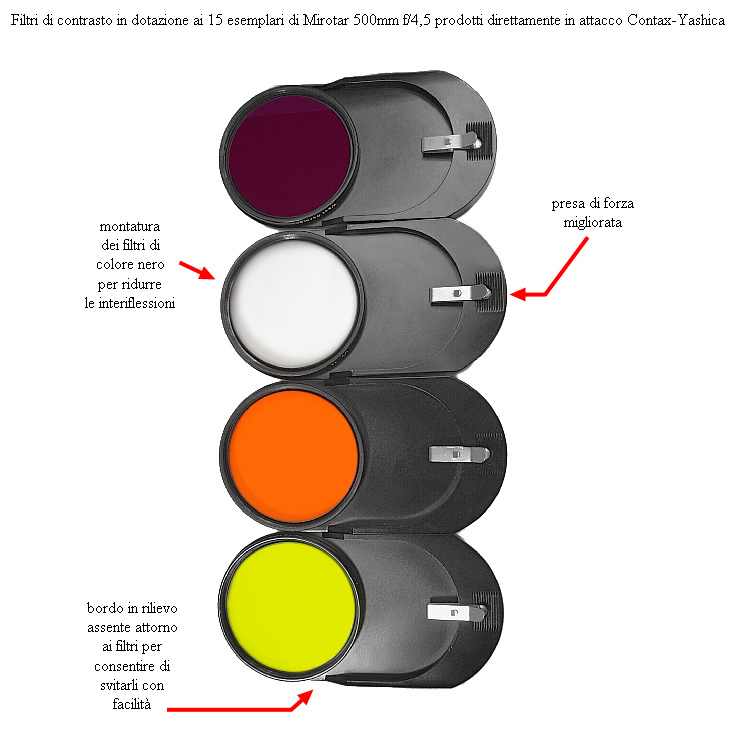SPECIAL AND INTERESTING LENSES PRODUCED BY CARL ZEISS JENA AND CARL ZEISS OBERKOCHEN:
TESSAR 21cm f/4,5, TESSAR 13,5cm f/6,3, ANASTIGMAT 110mm f/8, APO-TESSAR 30cm f/9, TESSAR 40mm f/3,5, TESSAR 23mm f/2,8, TESSAR 105mm f/3,5, LUMINAR 16mm f/2,5 e 25mm f/3,5, SONNAR 2,5cm f/1,4, APO-GERMINAR 375mm f/9, DOKUMAR 47mm f/5,6, BLASENKAMMEROBJEKTIV ZEISS JENA 39mm f/8, BLASENKAMMEROBJEKTIV ZEISS S-DISTAGON f/11, P-FLEKTOGON 35mm f/2,8, JUSTIER OPTIK JO-1 14mm f/14, S-PLANAR 120mm f/5,6 in M46x1, S-PLANAR 25mm f/1,6 4050A░, S-PLANAR 50mm f/1,6 4360 A░, S-PLANAR 95mm f/2,1 4360 A░, UV-PLANAR 60mm f/4, S-DISTAGON 27-32mm f/1,5 T*, MIROTAR 500mm f/4,5, N-MIROTAR 210mm T= 0,03, TELE-TESSAR 500mm f/8 AND SPIEGELOBJEKTIV 500mm f/4.
10/12/2012 (UPDATED 04/02/2015)
This article required a lot of preliminary job for researches as well as acquisition of unusual pieces, in some cases expensive, and I want to consider it a sort of Christmas gift dedicated to my many friends and enthusiasts of this topic.
To paraphrase the famous maxim "the phylogeny summarizes the Ontogeny", the evolution of the Zeiss brand, in it's multiform and suffered corporate transformisms and reorganizations, embodies a bit 'the history of modern photography itself, a great mother who has always introduced new technologies and formed skilled technicians which, like seeds carried by the wind, in turn have brought success to other famous companies, often reaching the top of their design offices, and of course the Zeiss production, structured between pre-war Carl Zeiss Jena and Zeiss Ikon and postwar Carl Zeiss Jena, Carl Zeiss Oberkochen and Zeiss Ikon Stuttgart, is really huge, a real triumph of forms and models: in this context, I have isolated a cross selection, with a broad spectrum of lenses produced in various periods and intended for a broad range of usages, even unknown to most people: the only common denominator is the famous brand name that identifies them.
The first set of objectives rightly honors the Tessar type project. the famous masterpiece by Paul Rudolph unveiled in 1902; thanks to its simple construction, flare resistance even in absence of antireflection coating and excellent performance, at the time matched only by much more complex convertible models, featuring even 8 lenses, this optical project arose an immediate and overwhelming success and became the most copied model in the world: there is no company involved in the production of objectives, were them for taking, reproduction or enlarging purposes, which had not conceived at least one lens based on the classic 4 lenses - 3 groups Tessar type; modern and emblazoned interpretations (Ai-P Nikkor 45mm f/2,8, Leica Elmar-M 50mm f/2,8 new), credited with excellent performance, confirm that the famous "Adlerauger" (the eye eagle) is still truly actual.
The first example we consider brings us back to photography adolescent dawn: it is a Carl Zeiss Jena Tessar 21cm f/4,5 in BBM (brass barrel mount), that is with straight brass barrel and without leaf shutter; the front ring shows the 142.294 patent number of the Kaiserliches Patent Office, registered on April, 25 1902, and the serial number 111.389 whitnesses a production restricted to August 1909, well 113 years ago ... At the same time the famous Burgess Shales were discovered in British Columbia, with their exceptional Cambrian fauna preserved so well that, for the first time, we studied the soft parts of the trilobites, a distant event which now belongs to the history of paleontology.










